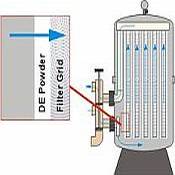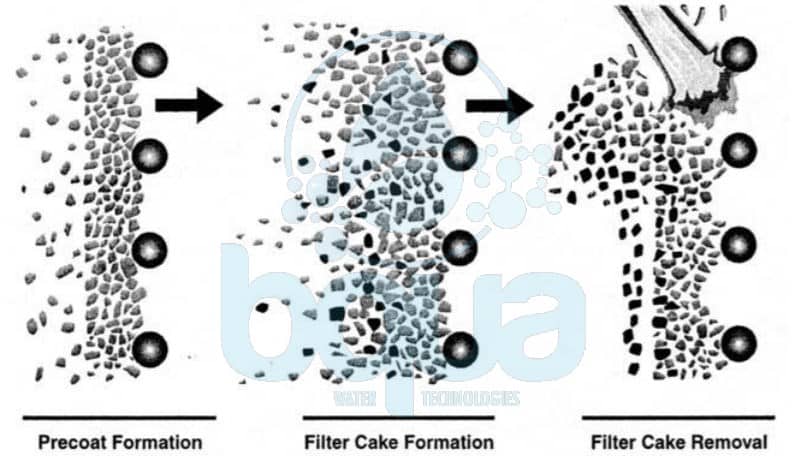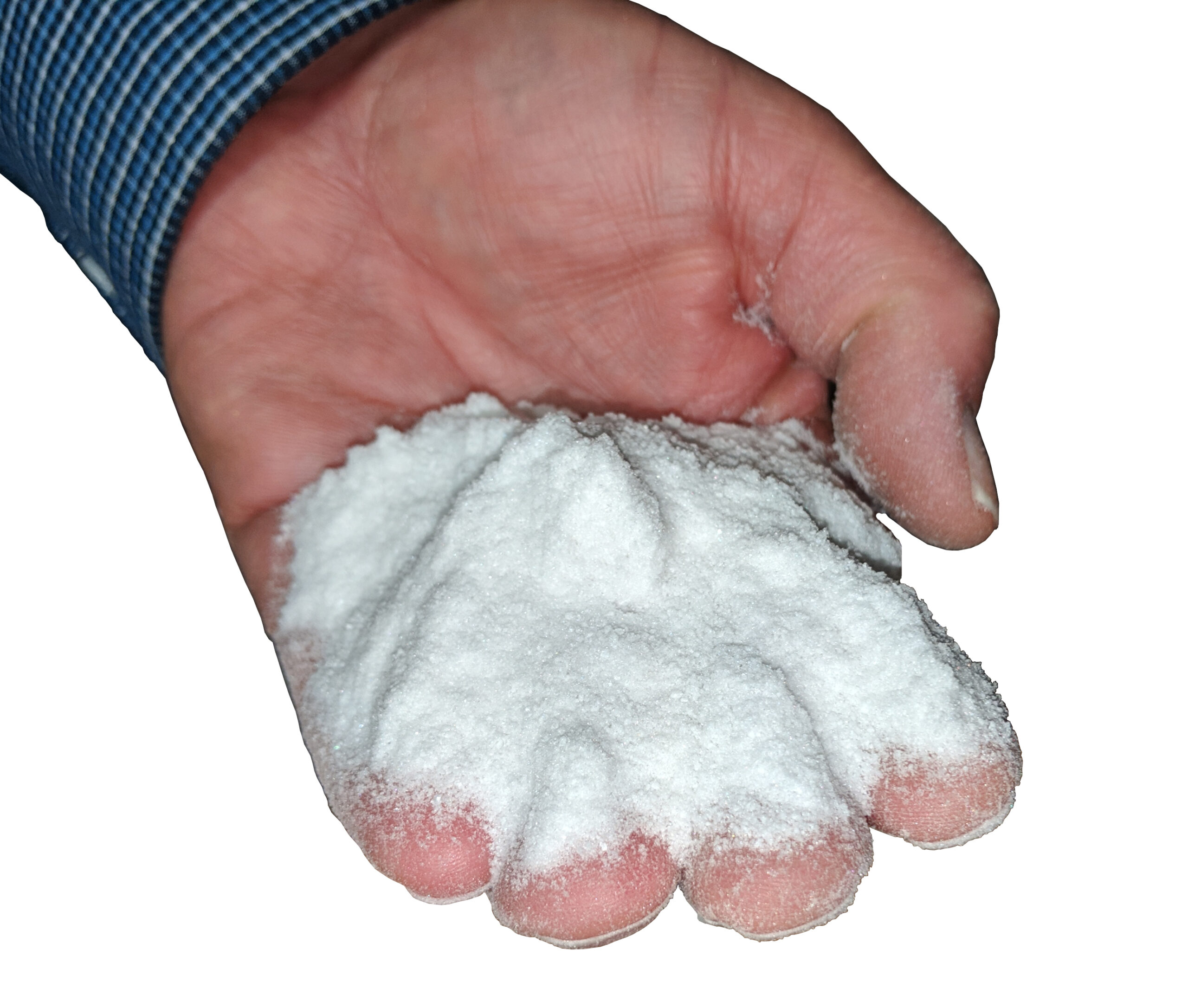Diatomaceous Planet Filtering: A Natural Service for Superior Water Filtration

Diatomaceous Planet (DE) filtering has actually emerged as a compelling technique for improving water purification, utilizing the special residential or commercial properties of fossilized diatoms. As worries over water top quality heighten, comprehending the advantages and functional applications of DE filtering system ends up being increasingly relevant.

What Is Diatomaceous Planet?
Diatomaceous planet (DE) is a normally taking place, soft, stratified rock that is made up mostly of the fossilized remains of small water microorganisms referred to as diatoms. These single-celled algae have a distinct, silica-based cell wall that adds to the unique residential or commercial properties of DE. The rock is porous and generally light, enabling it to soak up different compounds efficiently.

Because of its high porosity and absorbent ability, DE serves countless applications, including its usage in agriculture, insect control, and, significantly, water purification. The performance of diatomaceous planet in filtering is credited to its ability to trap and remove impurities from water, making it an increasingly popular option among those seeking natural purification remedies. Its environmentally friendly nature and flexibility further improve its charm across different markets.
Exactly How Diatomaceous Planet Filtering Works
The one-of-a-kind framework of diatomaceous planet (DE) enables it to operate as an effective filtration tool in water purification systems (diatomaceous earth filtering). Composed of the fossilized remains of tiny, water microorganisms referred to as diatoms, DE possesses a highly absorbing and permeable nature. This intricate structure permits DE to catch pollutants and impurities as water streams via it, effectively removing particles as little as 1 micron
When water is gone through a DE filter, the liquid comes across a network of microscopic pores that capture suspended solids, germs, and various other unwanted materials. The filtering procedure happens due to both electrostatic and mechanical interactions, where larger bits are physically trapped within the DE's matrix, while smaller sized particles might follow the surface area because of charged interactions.
Furthermore, DE can be made use of in conjunction with other filtration techniques to boost general performance. As water remains to stream with the DE layer, it gradually becomes more clear and cleaner, showcasing the medium's capability to boost water quality without the demand for severe chemicals. This natural filtration procedure highlights diatomaceous planet's duty as a sustainable and effective remedy for water filtration.
Advantages of Diatomaceous Earth Filtering
Efficiency in water filtration is substantially improved via making use of diatomaceous earth (DE) filtering system, providing numerous advantages that make it a preferred option for many applications. One of the key benefits of DE filtering system is its ability to remove a broad range of impurities, including microscopic microorganisms, sediments, and also specific chemicals. This ability makes sure that the water cleansed via this technique is not only tidy but also risk-free for intake.
Furthermore, DE filters have a high circulation price, which enables quicker purification contrasted to standard techniques. This characteristic is specifically beneficial for large operations such as municipal water treatment plants or swimming pools. Making use of DE also reduces the demand for extreme chemical ingredients, advertising an extra ecologically pleasant approach to water purification.
In addition, DE filtering systems are reasonably very easy to preserve, requiring much less frequent substitute than various other filtering media. The all-natural beginning of diatomaceous earth contributes to its sustainability, making it an eco-conscious option. Generally, the combination of performance, performance, and environmental benefits positions diatomaceous planet filtering as a leading service in the realm of water filtration.
Contrast With Conventional Water Filters
When evaluating water purification methods, diatomaceous earth filtering stands apart in comparison to conventional water filters. Traditional water filters, such as triggered carbon or ceramic filters, mostly concentrate on eliminating contaminants through adsorption or physical obstacles. While these techniques work for sure pollutants, they may not record smaller particles, bacteria, or viruses as successfully as diatomaceous earth (DE) this link filters.
Diatomaceous earth filtering makes use of the unique framework of diatomite, composed of microscopic, porous fossilized algae. This enables DE filters to catch fragments as tiny as 1 micron, giving superior purification capabilities. In addition, DE filters can deal with larger volumes of water without significant pressure loss, making them ideal for both household and industrial applications.
In addition, diatomaceous earth is a natural and lasting product, posing fewer ecological problems contrasted to some artificial filter media. On the other hand, typical filters often require routine substitute and disposal, causing raised waste.
Applications and Use Instances
Diatomaceous earth (DE) filtering system has a varied array of applications throughout numerous industries as a result of its effective purification capabilities. Among one of the most popular uses of DE remains in the food and beverage industry, where it functions as a filtration medium for a glass of wine, beer, and juice manufacturing. Its permeable framework effectively gets rid of contaminations, guaranteeing a clear and tasty end product.
In the realm of swimming pool maintenance, DE filters are favored for their capability to catch fine fragments, giving superior water clearness compared to standard sand filters. Furthermore, DE is utilized in municipal water therapy centers, where it helps in the elimination of put on hold solids, microorganisms, and various other impurities, adding to safe drinking water.

Beyond water filtration, diatomaceous earth finds applications in the farming sector as a natural pesticide and soil change, promoting healthier plants while reducing chemical use. Additionally, its absorptive homes make it beneficial in various industrial processes, consisting of oil spill clean-ups and as a filler in building products. Generally, the flexibility of diatomaceous planet filtering positions it as a valuable remedy for enhancing water high quality across multiple domain names.
Conclusion
Diatomaceous earth filtering system stands for a reliable and sustainable method for water filtration. As understanding of water top quality problems expands, the fostering of diatomaceous earth filters in different applications is likely to raise, contributing to enhanced public health and environmental conservation.
Diatomaceous Planet (DE) filtering system has emerged as an engaging method for enhancing water purification, using the unique residential properties of fossilized diatoms. As water continues to stream with the DE layer, it progressively comes to be more clear and cleaner, showcasing the medium's capability to improve water quality without the demand for rough chemicals.Performance in water filtration is considerably enhanced with the usage of diatomaceous earth (DE) filtering, providing countless advantages that make top article it a preferred option for lots of applications.When evaluating water purification techniques, diatomaceous earth filtering stands check out in contrast to typical water filters. Traditional water filters, such as activated carbon or ceramic filters, mainly concentrate on eliminating contaminants via adsorption or physical barriers.